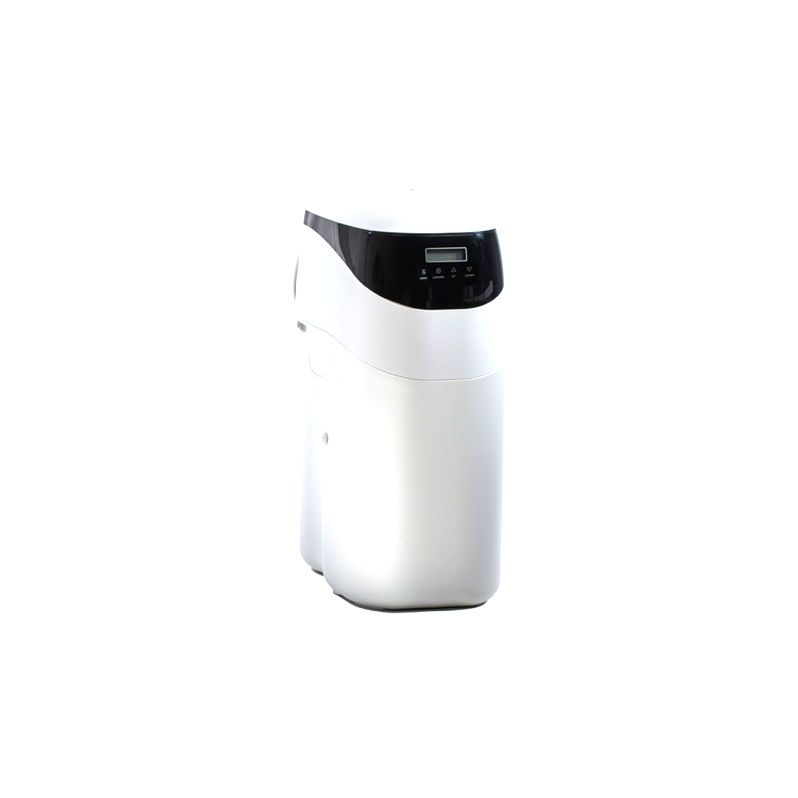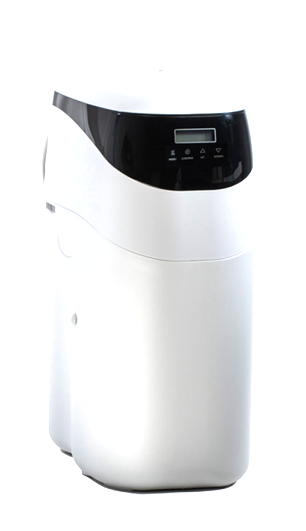
Softener, Filter
& Accessories
Outstanding Systems Require Equivalent Accessories
To complete our portfoilis, we offer, among other things, selected filters,
water siftener, storage tanks and pump stations.
Each component has been carefully tested and selected
for its excellent quality and durability.
Softener, Filter
& Accessories

Outstanding Systems Require Equivalent Accessories
To complete our portfoilis, we offer, among other things, selected filters, water siftener, storage tanks and pump stations.
Each component has been carefully tested and selected
for its excellent quality and durability.
Water Softeners

Bildtitel
Twin Water Softener - Small
Button
Bildtitel
Cabinet Water Softeners
ButtonBildtitel
Twin Water Softener - Big
Button
-
Time controlled
A timer controlled softener is designed to regenerate the resin bed after a preset amount of time has elapsed
-
Volume controlled
A volume meter controlled softener regenerates when a specified amount of water (this can vary greatly depending on your softener's capacity water and water hardness) has passed through the system
-
Quality controlled
Instead of the time or quantity control, quality controlled softener uses sensor technology that is able to directly detect the soft water capacity. By measuring the water hardness as a defined limit value, the sensor technology precisely detects when the capacity of the softening plant is exhausted. All factors that influence the capacity of the system are recorded. In this way, water hardness, salt quantity for regeneration, system size, ageing of the ion exchangers, fluctuations in water hardness or salt supply are registered by the sensor control. A defect in the system is also detected by the measured water hardness and recorded directly. Quality control with sensor technology results in the best achievable efficiency and thus the lowest salt and water consumption.
Bildtitel
Twin Water Softener
Button
Bildtitel
Cabinet Water Softeners
Button
Bildtitel
Twin Water Softener
Button
Bildtitel
Cabinet Water Softeners
Button
Water Softeners
Bildtitel
Twin Water Softener
Button
Bildtitel
Cabinet Water Softeners
Button

Bildtitel
Button
Backflushable Fine Filters

Bildtitel
Backflushable Fine Filter 100µm
Button
Bildtitel
Backflushable Fine Filter 100µm
with automatic reverse rinse actuator
Button
Backflushable Fine Filters

Bildtitel
Backflushable Fine Filter 100µm
Button
Bildtitel
Backflushable Fine Filter 100µm
with automatic reverse rinse actuator
Button
UV Systems for Various Applications

Bildtitel
UV Flow-Through Disinfection System
< 1.5m³/h
Button
Bildtitel
UV Immersion Tube System for Tank Disinfection
Button
Bildtitel
UV Flow-Through Disinfection System
with TOC Reduction
< 16m³/h
Button
Bildtitel
UV Flow-Through Disinfection System
1.5m³/h - 20m³/h
Button
-
UV disinfection - 254nm
Our simple UV flow-through disinfection systems use UV light at 254nm which has a strong bactericidal action as it damages DNA and RNA polymerase at low doses preventing replication; higher doses are biocidal. The systems are maintenance-free except for the lamp replacement and the water only contacts the quartz sleeve surrounding the lamp which is minimising contamination.
-
UV disinfection with TOC reduction - 185/254nm
Our dual-wavelength UV disinfection systems use also UV light at 185nm which has a strong oxidising action breaking down large organic molecules into carbon dioxide. These components can be removed downstream by our high purity ion exchangers. The systems are also maintenance-free except for the lamp replacement and the water only contacts the quartz sleeve surrounding the lamp which is minimising contamination.
-
UV immersion tube system
UV immersion systems were specially developed for the chemical-free disinfection of water in storage tanks using UV radiation. The systems can be used in closed tanks with static and strongly fluctuating filling levels.
The UV system irradiates the water and the tank walls above and below the water level with UV-C radiation, so that no biofilm can develop and the water is permanently disinfected. This not only optimally disinfects the water, but also prevents rapid renewed contamination of the water from causing problems; these devices are therefore a real in-situ solution.
It disinfects the entire interior of the tank (liquid, gas space and tank wall surfaces) and also forms an effective barrier against contamination via the tank ventilation.
In this way, a chemical-free solution ensures better efficiency than chemicals, because no resistance to UV radiation can develop without the side effects of the disinfectant having to be accepted.
UV Systems

Bildtitel
UV Flow-Through Disinfection System
< 1.5m³/h
Button
Bildtitel
UV Immersion Tube System for Tank Disinfection
Button
Bildtitel
UV Flow-Through Disinfection System
with TOC Reduction
< 16m³/h
Button
Bildtitel
UV Flow-Through Disinfection System
1.5m³/h - 20m³/h
Button
Filter Housings and Cartridges

Bildtitel
PP Filter Housing 10" - white
Button
Bildtitel
PP Filter Housing 20" - blue
Button
Bildtitel
Stainless Steel Filter Housing 10"
Button

Bildtitel
Sterile Filter 0.2µm
Button
Bildtitel
Combi Filter Activated Carbon + 5µm
Button
Bildtitel
Combi Filter Hardness Stabiliser + 5µm
Button
Bildtitel
Ultrafilter 0.05µm
Button
Bildtitel
Pre Filter 1µm, 3µm and 5µm
Button
Nominal and absolute filters in different lengths, diameters and pore sizes as well as suitable filter housings in PP, PVDF or stainless steel with or without indicator pressure gauge and degassing.
-
Sediment Filter
Sediment filters are commonly nominal filters in 5", 10" or 20" from 10 to 1µm which remove visible particulate matter, and any particles of dirt, sand, dust, and debris that can be caught by its micron-rated capacity. Sediment filters also remove turbidity from water. Turbidity is the cloudiness caused in water by the heavy presence of suspended solids. This causes water to turn yellow, orange, or brown.
Sediment filters are most effective when serving as prefilters for other filtration systems. This is why sediment filtration very often works in conjunction with other filtration methods, like reverse osmosis.
-
Combi Filter with Activated Carbon
Activated carbon is used because of its reducing effect against organic, inorganic and harmful substances. It reduces flavours and odours as well as chlorine, pesticides (Lindan, DDT) and trihalomethanes (THMs). The fabrics are adsorbed from the large surface area of the activated carbon. The combination with a sediment filter is the perfect choice to protect downstream reverse osmosis membranes.
-
Hardness Stabilizer
Lime can clog and even totally block RO membranes. The level of water hardness depends on the calcium and magnesium ions dissolved in the water. Crystallization leads to build-ups of sediment. To avoid this, long-chain polyphosphates prevent the nucleation and crystallization processes that lead to deposits. This method makes it possible to completely stabilize the carbonate hardness of drinking water if the water hardness is lower than 10°dH so that no water softener is needed.
-
Sterile Filter
Sterile filters are used to remove particulate and microbial contamination from water. Filtering through a 0.2 micron pore size is considered necessary to generate a sterile filtrate.
All sterile filters are designed, developed and manufactured in accordance with a Quality Management System approved by an accredited registering body.
-
Ultrafilter
Ultrafiltration is one membrane filtration process that serves as a barrier to separate harmful bacteria, viruses, and other contaminants from clean water by means of a 0.05 micron membrane. Suspended particles that are too large to pass through the membrane stick to the outer membrane surface. Only fresh water and dissolved minerals pass through.

Bildtitel
Button

Bildtitel
Button
Filter Housings and Cartridges
Nominal and absolute filters in different lengths, diameters and pore sizes as well as suitable filter housings in PP, PVDF or stainless steel with or without indicator pressure gauge and degassing.
-
Sediment Filter
Sediment filters are commonly nominal filters in 5", 10" or 20" from 10 to 1µm which remove visible particulate matter, and any particles of dirt, sand, dust, and debris that can be caught by its micron-rated capacity. Sediment filters also remove turbidity from water. Turbidity is the cloudiness caused in water by the heavy presence of suspended solids. This causes water to turn yellow, orange, or brown.
Sediment filters are most effective when serving as prefilters for other filtration systems. This is why sediment filtration very often works in conjunction with other filtration methods, like reverse osmosis.
-
Combi Filter with Activated Carbon
Activated carbon is used because of its reducing effect against organic, inorganic and harmful substances. It reduces flavours and odours as well as chlorine, pesticides (Lindan, DDT) and trihalomethanes (THMs). The fabrics are adsorbed from the large surface area of the activated carbon. The combination with a sediment filter is the perfect choice to protect downstream reverse osmosis membranes.
-
Hardness Stabilizer
Lime can clog and even totally block RO membranes. The level of water hardness depends on the calcium and magnesium ions dissolved in the water. Crystallization leads to build-ups of sediment. To avoid this, long-chain polyphosphates prevent the nucleation and crystallization processes that lead to deposits. This method makes it possible to completely stabilize the carbonate hardness of drinking water if the water hardness is lower than 10°dH so that no water softener is needed.
-
Sterile Filter
Sterile filters are used to remove particulate and microbial contamination from water. Filtering through a 0.2 micron pore size is considered necessary to generate a sterile filtrate.
All sterile filters are designed, developed and manufactured in accordance with a Quality Management System approved by an accredited registering body.
-
Ultrafilter
Ultrafiltration is one membrane filtration process that serves as a barrier to separate harmful bacteria, viruses, and other contaminants from clean water by means of a 0.05 micron membrane. Suspended particles that are too large to pass through the membrane stick to the outer membrane surface. Only fresh water and dissolved minerals pass through.
Pure Water Storage Tanks

Bildtitel
Button
Bildtitel
Button
- The materials are selected for their minimum release of extractables.
- A smooth inner surface prevents biofilm formation.
- Sealed lid blocks air from entering the tank.
- Various, space-saving designs are available.
- An overflow connected to the drain ensures a safe operation in the unlikely event of a water system malfunction.
Pure Water Storage Tanks
- The materials are selected for their minimum release of extractables.
- A smooth inner surface prevents biofilm formation.
- Sealed lid blocks air from entering the tank.
- Various, space-saving designs are available.
- An overflow connected to the drain ensures a safe operation in the unlikely event of a water system malfunction.

Bildtitel
Tank 1500l - PE
with Level Control, Sterile Overflow
and Sterile Vent Filter + CO2 Absorber
Button
Bildtitel
Tank 100l - PP-H
with Level Control, Sterile Overflow
and Sterile Vent Filter
Button
-
Level Sensors
Varios optional level sensors are available to communicate with the water purification system.
-
Vent Filters
Advanced vent filters with or without CO2 Adsorber protecting your stored water against airborne contaminants.
-
Sterile Overflow
A sterile overflow protects your stored water from bacteriological contamination from the drain.
-
UV Disinfection
UV sanitization module prevents the growth and proliferation of bacteria.
Booster Pump Systems

Bildtitel
Single Booster Pump
Button
Bildtitel
Twin Booster Pump
Button
Bildtitel
Triple Booster Pump
Button

Bildtitel
Single Booster Pump
Button
Bildtitel
Twin Booster Pump
Button
Bildtitel
Triple Booster Pump
Button

Bildtitel
Single Booster Pump
Button
Bildtitel
Twin Booster Pump
Button
Bildtitel
Triple Booster Pump
Button
NEPTEC booster pump systems consist of one to three pumps connected and mounted on a common base frame with all necessary fittings. They are designed for the water supply of pure nad ultrapure water. The integrated speed controller enables the pumps to maintain a constant pressure in the pipe system.
-
Plug & Pump
NEPTEC pumps are supplied as a complete preassembled system mounted on a base frame. The only task left is to connect the pipes and the power supply.
-
User Friendliness
We are using highly intelligent booster systems which are capable of controlling up to four speed-controlled pumps in cascade. It has only two buttons for complete control of the system. Alternatively, you can use Grundfos GO Remote for setup and control.
-
Perfect Constant Pressure Control
The speed-controlled pumps are perfectly controlled and adjusted by the PI controller to deliver the correct pressure at the required flow.
-
Reliability
Grundfos pumps are known for their reliability and long life. The PI controller is protected inside the pump and this has proven to be a very reliable solution.
-
Multimaster function
All pumps that have an outlet-pressure sensor connected are capable of taking control of the entire booster system. This means that the system will continue to operate as a booster system even if one or more of the pumps or sensors are unavailable. Compared to systems with only one sensor, this makes our pump station an extremely reliable solution.
-
Low Energy Consuption
The pump stations ensure low energy consumption through speed-controlled pumps, automatic cascade control of the pumps and highly efficient low-flow operation. The highly efficient motors and pumps also contribute to the overall high efficiency.
-
Pump Alternation
Pump alternation ensures that the operating hours are distributed evenly on the pumps over time.
-
Dry-Running Protection
Dry-running protection is very important as dry running may damage the bearings and shaft seals.

Bildtitel
Single Booster Pump
Button
Bildtitel
Triple Booster Pump
Button
Booster Pump Systems
NEPTEC booster pump systems consist of one to three pumps connected and mounted on a common base frame with all necessary fittings. They are designed for the water supply of pure nad ultrapure water. The integrated speed controller enables the pumps to maintain a constant pressure in the pipe system.
-
Plug & Pump
NEPTEC pumps are supplied as a complete preassembled system mounted on a base frame. The only task left is to connect the pipes and the power supply.
-
User Friendliness
We are using highly intelligent booster systems which are capable of controlling up to four speed-controlled pumps in cascade. It has only two buttons for complete control of the system. Alternatively, you can use Grundfos GO Remote for setup and control.
-
Perfect Constant Pressure Control
The speed-controlled pumps are perfectly controlled and adjusted by the PI controller to deliver the correct pressure at the required flow.
-
Reliability
Grundfos pumps are known for their reliability and long life. The PI controller is protected inside the pump and this has proven to be a very reliable solution.
-
Multimaster function
All pumps that have an outlet-pressure sensor connected are capable of taking control of the entire booster system. This means that the system will continue to operate as a booster system even if one or more of the pumps or sensors are unavailable. Compared to systems with only one sensor, this makes our pump station an extremely reliable solution.
-
Low Energy Consuption
The pump stations ensure low energy consumption through speed-controlled pumps, automatic cascade control of the pumps and highly efficient low-flow operation. The highly efficient motors and pumps also contribute to the overall high efficiency.
-
Pump Alternation
Pump alternation ensures that the operating hours are distributed evenly on the pumps over time.
-
Dry-Running Protection
Dry-running protection is very important as dry running may damage the bearings and shaft seals.







